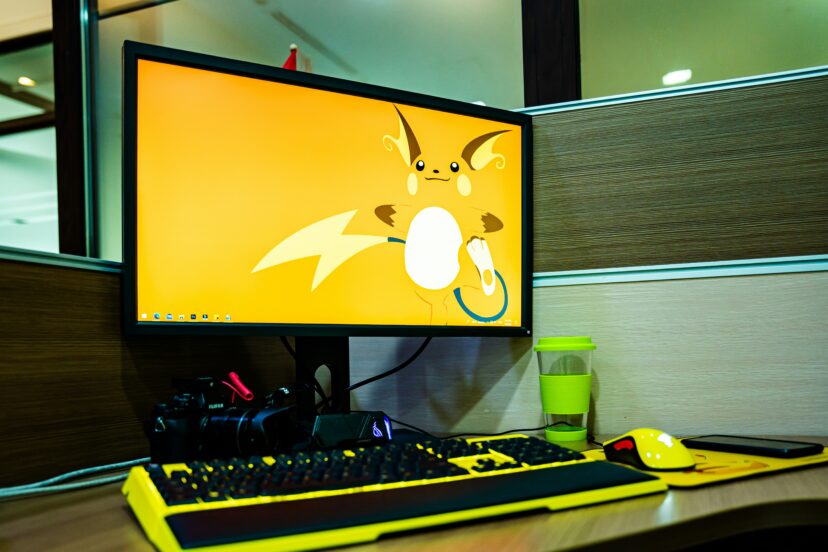What Are The Main Components Needed To Build A Gaming PC?
Building your very own gaming PC is an exciting venture, and knowing where to start is half the battle. In “What Are The Main Components Needed To Build A Gaming PC?”, you’ll discover the essential pieces that transform a pile of parts into your dream gaming rig. From the heart-pounding power of the graphics card to the steady reliability of the power supply, I’ll guide you through each crucial component with a friendly hand. Let’s embark on this adventure together and make sure you have everything you need to create a beastly machine ready to tackle any game thrown its way. Have you ever wondered what it takes to build your own gaming PC? Maybe you’ve seen those sleek, RGB-lit setups and thought, “I want one of those!” Building a gaming PC can seem like a daunting task, especially if you’re not sure where to start. But don’t worry, we’re here to guide you through the process. By the end of this article, you’ll be well-acquainted with all the main components you need to build a powerful gaming rig.
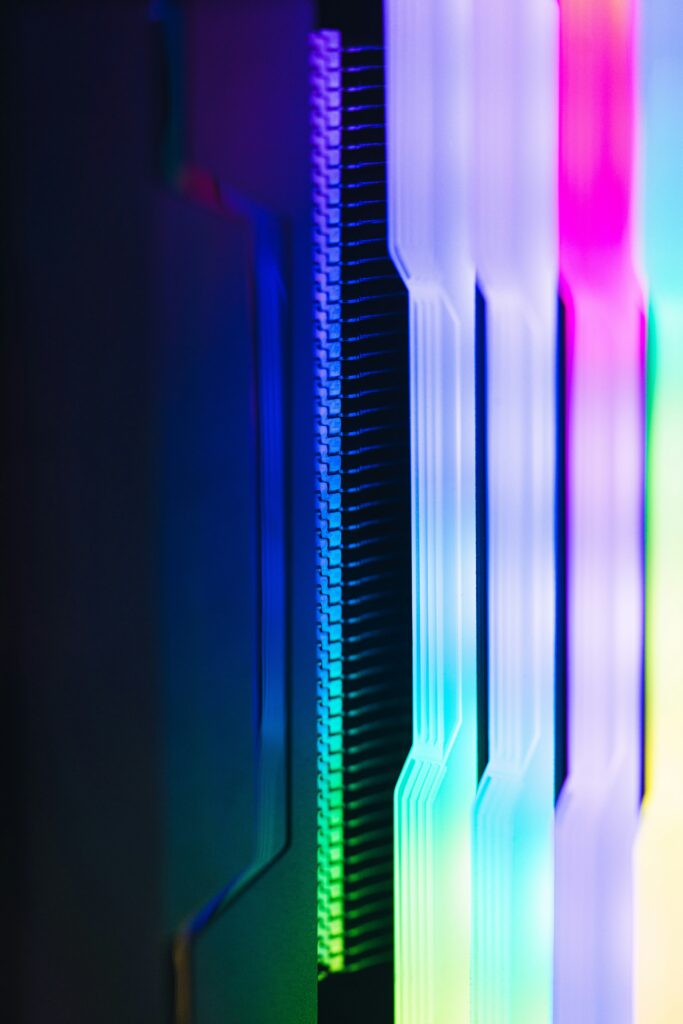
Understanding the Basics
Before diving into the nuts and bolts of each component, it’s important to grasp the basics. A gaming PC is a finely-tuned machine designed for high performance, capable of handling the latest games with ease. While pre-built options are available, building your own PC offers the advantage of handpicking each component to fit your need and budget. But what exactly do you need?
Central Processing Unit (CPU)
Your CPU, often referred to as the “brain” of your PC, is where all the processing happens. Whether you’re gaming, editing videos, or browsing the web, the CPU handles all the tasks.
- How it Works: The CPU executes instructions from your programs and games. Higher clock speeds and more cores typically offer better performance.
- Popular Brands: Intel and AMD are the predominant players in the CPU market.
- What to Look For: When selecting a CPU, consider the number of cores, threads, and clock speeds, as these features influence performance.
Graphics Processing Unit (GPU)
If the CPU is the brain, the GPU is the heart, particularly for gaming. The GPU manages all graphics-related tasks and is crucial for rendering the stunning visuals you see in games.
- How it Works: The GPU processes and renders images, animations, and videos. Higher-end GPUs allow for better graphics quality and smoother gameplay.
- Popular Brands: NVIDIA and AMD lead the GPU market.
- What to Look For: Look at the GPU’s VRAM, clock speed, and architecture. More VRAM and higher clock speeds generally translate to better performance.
Motherboard
The motherboard is the backbone of your PC, connecting all other components. It’s essential to choose a motherboard that’s compatible with your other parts.
- How it Works: The motherboard houses the CPU, memory, and other key components. It also includes slots for additional cards like GPUs and sound cards.
- Popular Brands: ASUS, MSI, Gigabyte, and ASRock are well-known motherboard manufacturers.
- What to Look For: Ensure the motherboard socket matches your CPU, and check for the number of RAM slots, expansion slots, and storage connections.
Memory (RAM)
Random Access Memory (RAM) is your system’s short-term memory, storing data that the CPU needs quickly. For gaming, you’ll need a decent amount of RAM to ensure smooth gameplay.
- How it Works: RAM temporarily stores data for quick access by the CPU, reducing the time it takes to retrieve data from the storage drive.
- Popular Brands: Corsair, G.Skill, Kingston, and Crucial are major RAM manufacturers.
- What to Look For: Aim for at least 16GB of RAM. Faster speeds (measured in MHz) can also contribute to better performance.
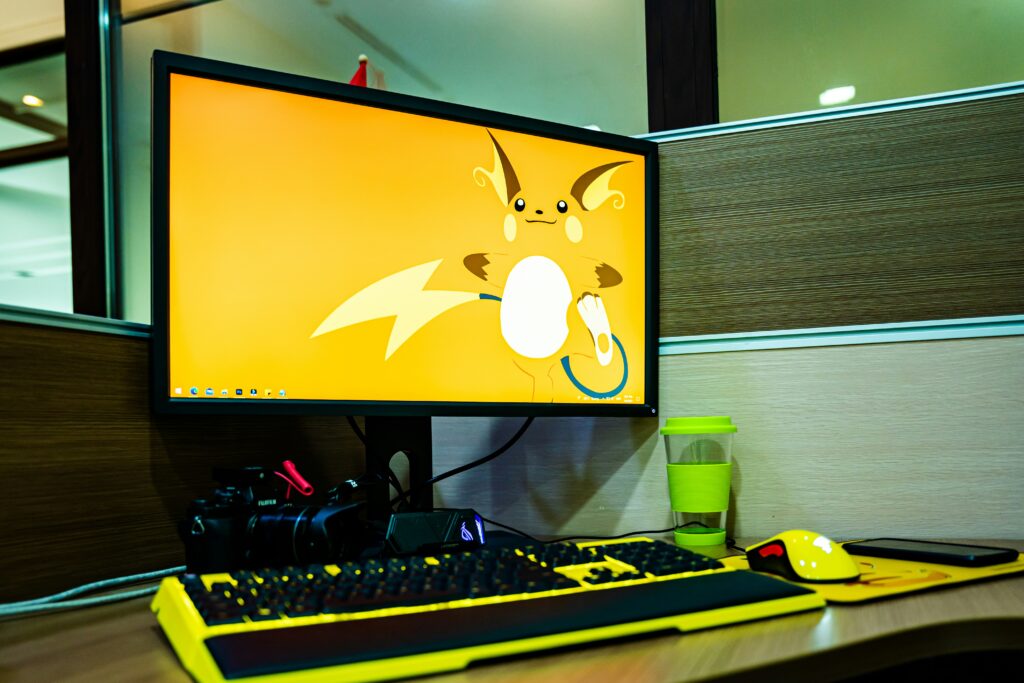
Storage
There are two primary types of storage: Hard Disk Drives (HDDs) and Solid State Drives (SSDs). Each has its pros and cons.
Hard Disk Drive (HDD)
- How it Works: HDDs use spinning disks to read and write data. They offer large storage capacities at lower prices but are slower than SSDs.
- Popular Brands: Western Digital, Seagate, and Toshiba.
- What to Look For: Choose an HDD if you need lots of storage space on a budget, usually 1TB or more.
Solid State Drive (SSD)
- How it Works: SSDs use flash memory to read and write data, offering much faster speeds than HDDs.
- Popular Brands: Samsung, Crucial, and WD.
- What to Look For: Opt for an SSD for your primary drive to install your operating system and most-used games. A 512GB SSD is a good starting point.
Power Supply Unit (PSU)
The PSU delivers electricity to all the components in your PC. Choosing a reliable power supply is crucial for system stability and longevity.
- How it Works: The PSU converts electricity from your wall outlet into a manageable form for your PC components.
- Popular Brands: EVGA, Corsair, and Seasonic.
- What to Look For: Look for at least an 80+ Bronze rating for efficiency. Ensure the PSU provides enough wattage for your entire system.
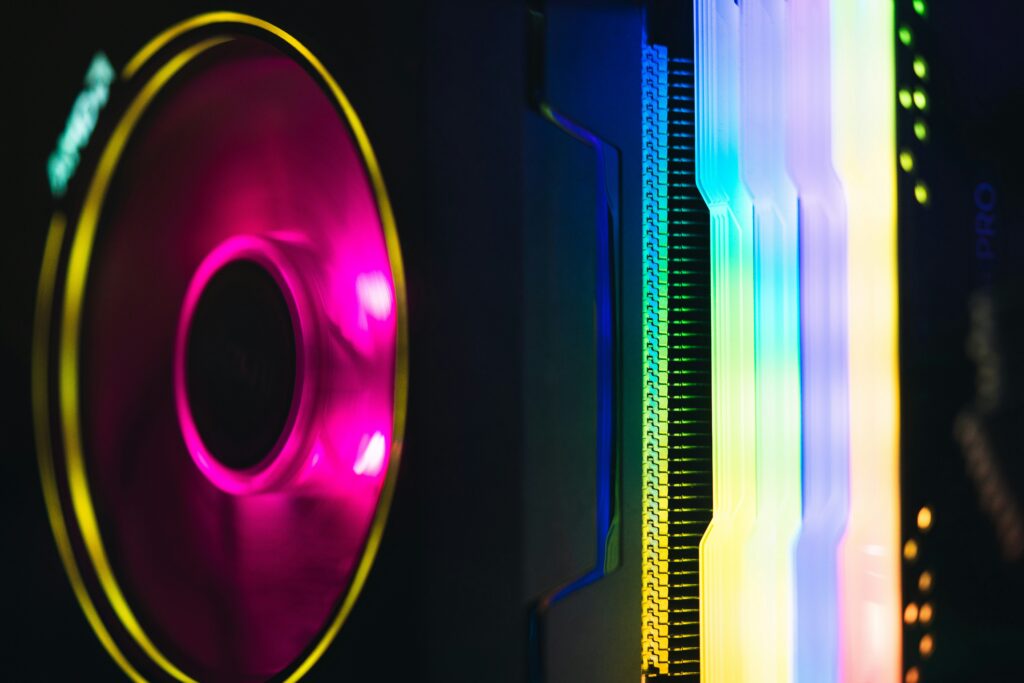
Cooling System
Keeping your components cool is vital for maintaining performance and longevity. There are two main types of cooling systems: air and liquid.
Air Cooling
- How it Works: Air coolers use fans to dissipate heat from the CPU and other components.
- Popular Brands: Cooler Master, Noctua, and be quiet!
- What to Look For: Check the compatibility with your CPU and case. Larger, more efficient coolers often provide better performance.
Liquid Cooling
- How it Works: Liquid coolers circulate a liquid coolant to absorb and dissipate heat.
- Popular Brands: Corsair, NZXT, and EKWB.
- What to Look For: AIO (All-In-One) liquid coolers are easier to install and maintain, making them a good choice for most users.
Case
The case holds all your components in place and provides airflow to keep them cool. It also contributes to the aesthetic of your build.
- How it Works: The case organizes and protects your components, offering mounting points and space for airflow.
- Popular Brands: NZXT, Corsair, and Fractal Design.
- What to Look For: Consider size (ATX, Micro ATX, Mini ITX), compatibility with your motherboard, and the number of drive bays and expansion slots.
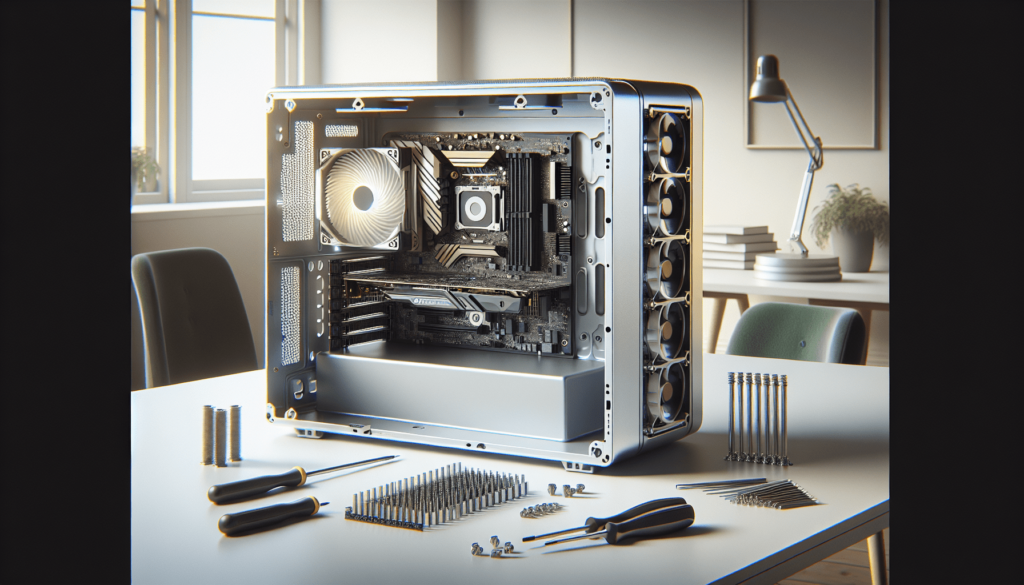
Monitor
After assembling your gaming PC, you’ll need a monitor to display your games. Choosing the right monitor can significantly impact your gaming experience.
- How it Works: The monitor displays the visual output from your GPU. Higher resolution and refresh rates offer better visuals.
- Popular Brands: ASUS, Acer, Dell, and LG.
- What to Look For: Check for resolution (1080p, 1440p, 4K), refresh rate (60Hz, 120Hz, 144Hz), and response time (lower is better).
Peripheral Devices
While not part of the main build, peripheral devices are necessary for operating your PC.
Keyboard
- How it Works: The keyboard inputs commands to your PC.
- Popular Brands: Logitech, Corsair, Razer.
- What to Look For: Mechanical keyboards provide a tactile feel that many gamers prefer. Consider RGB lighting and additional macro keys for customization.
Mouse
- How it Works: The mouse allows you to navigate and interact with your PC’s user interface.
- Popular Brands: Logitech, Razer, SteelSeries.
- What to Look For: Look for high DPI (dots per inch) settings for better accuracy and customizable buttons for convenience.
Headset
- How it Works: The headset provides audio output and input, crucial for gaming.
- Popular Brands: HyperX, SteelSeries, Corsair.
- What to Look For: Go for a headset with good sound quality, a comfortable fit, and a reliable microphone.
Operating System
No PC build is complete without an operating system (OS). The OS is the software that manages your computer’s hardware and applications. For most gaming PCs, Windows is the go-to choice.
- Popular OS: Windows 10, Windows 11
- What to Look For: Ensure you have a legitimate copy for smooth updates and support. Some users may prefer Linux, but it requires more technical know-how and might not support all games.
Additional Accessories
Don’t forget about additional accessories that can enhance your gaming experience.
Speakers
Though your headset might often be enough, having a good set of speakers adds an extra dimension to your gaming experience.
- Popular Brands: Logitech, Razer, Bose.
- What to Look For: Look for good sound quality and additional features like surround sound or a subwoofer.
Webcam
If you’re into streaming or video calls, a high-quality webcam is a must.
- Popular Brands: Logitech, Razer, Microsoft.
- What to Look For: Consider resolution (1080p or higher) and frame rate for smooth video.
External Storage
While the internal storage covers your immediate needs, external storage provides additional space for backups and extra files.
- Popular Brands: Western Digital, Seagate, Samsung.
- What to Look For: Consider SSDs for faster access speeds and better portability.
Building the PC: Step-by-Step Guide
Once you have all your components, it’s time to assemble your gaming PC. Here’s a condensed step-by-step guide:
Step 1: Prepare Your Workspace
Ensure you have a clean, static-free environment with ample light. Gather all your tools, generally a screwdriver, and organize your components.
Step 2: Install the CPU and RAM
Start with the motherboard. Gently insert the CPU into its socket and apply the thermal paste. Next, install the RAM into the designated slots by aligning them properly and pressing down until they click.
Step 3: Mount the Motherboard
Carefully place the motherboard into your case, aligning it with the standoff screws. Secure it using the appropriate screws.
Step 4: Install the PSU
Place the PSU into its compartment. Connect it to the motherboard and ensure all connections are firm.
Step 5: Install Storage Devices
Attach your SSD and HDD to their respective slots and connect them to the motherboard and PSU.
Step 6: Install the GPU
Insert the GPU into the PCI-E slot on your motherboard, and secure it with screws. Connect the necessary power cables from the PSU to the GPU.
Step 7: Connect All Cables
Make all remaining connections, including case fans, front panel connectors, and additional power cables.
Step 8: Power On and Install OS
After everything is connected, power on your PC and enter the BIOS to ensure components are recognized. Insert your OS installation media, follow the prompts, and install your operating system.
Troubleshooting and Maintenance
Once your PC is up and running, you might encounter some hurdles. Here’s how to tackle common issues:
Drivers
- What They Do: Drivers are software that allows the OS to communicate with hardware.
- Problem: Outdated or missing drivers can cause problems.
- Solution: Regularly update your drivers through Device Manager or the manufacturer’s website.
Overheating
- Problem: High temperatures can cause performance issues or damage components.
- Solution: Ensure good airflow, clean dust from fans and heatsinks, and consider upgrading your cooling system.
Performance Issues
- Problem: Games might lag, stutter, or exhibit low FPS (frames per second).
- Solution: Ensure your settings are optimized for your hardware, close unnecessary background applications, and upgrade components if needed.
Future-Proofing Your PC
Building a gaming PC is a significant investment, so it’s wise to consider future-proofing to extend its lifespan. Here’s how:
- Upgradable: Choose a motherboard with extra RAM slots and additional PCI-E slots.
- Quality Components: Invest in a high-quality PSU and case to ensure longevity.
- Tech Trends: Stay updated on upcoming technologies like DDR5 RAM or PCIe 5.0 to make informed decisions.
Conclusion
Building your gaming PC is a rewarding experience that offers unparalleled customization and performance. By carefully selecting each component and following proper assembly guidelines, you can create a powerful machine tailored to your specific needs. Think of it as a journey where you learn new skills and gain better insights into how computers work.
Ready to take the plunge? Grab your components, roll up your sleeves, and embark on the adventure of building your very own gaming beast! Happy gaming!

